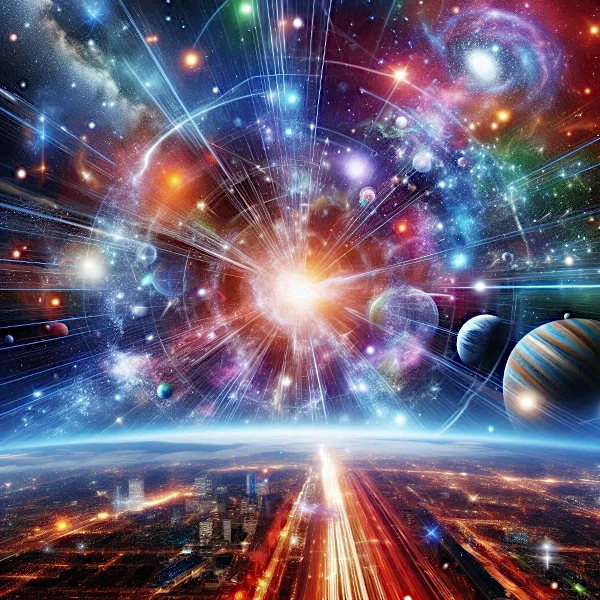
Image description: Visualization of the expansion of the Universe since the Big Bang. Image source: astronoo.com
The claim of the Universe's age is based on several observations and physical theories that allow us to estimate what is called the "cosmological age". This estimate comes mainly from the understanding of the laws of physics, the properties of the Universe's expansion, and the cosmic background radiation. How is this age determined?
The fundamental idea behind the age of the Universe is based on the Big Bang cosmological model, which suggests that the Universe began in an extremely dense and hot state about 13.8 billion years ago. The evolution of the Universe since that moment, particularly its expansion, is described by Einstein's general relativity equations.
$$ R_{\mu\nu} - \frac{1}{2}g_{\mu\nu}R + g_{\mu\nu}\Lambda = \frac{8 \pi G}{c^4} T_{\mu\nu} $$
The left side of the equation relates to the geometry of space-time, which is influenced by the distribution of matter and energy in the Universe represented by the right side of the equation. Are there space-time solutions that match our Universe?
The equations of general relativity are nonlinear partial differential equations, and although they can be solved in very specific cases, there is no exact general solution for all possible configurations of matter and energy.
We need to choose an approximate solution in agreement with observations, that is, a good mathematical model that corresponds to the description of the cosmos, depending on the accuracy of our measurements.
One of the first solid proofs of the Universe's expansion comes from the observation of the redshift of distant galaxies. This means these galaxies are moving away from us at a speed proportional to their distance, a phenomenon described by Hubble-Lemaître's law published in 1929. The relationship between the galaxies' distance and their recession velocity allows us to trace back to the time when these galaxies were concentrated in a single point, marking the Universe's beginning. By measuring this expansion (70 kilometers per second per megaparsec, the average used in calculations), cosmologists can calculate the time since the Big Bang.
The CMB, or fossil radiation, is a form of electromagnetic radiation emitted about 380,000 years after the Big Bang when the Universe had cooled enough for electrons and protons to combine and form hydrogen atoms. This radiation, observed throughout the Universe, contains information about the state of the Universe at these early times. Precise measurements of the CMB, notably from satellites like WMAP or Planck, provide clues about the structure of the early Universe and help constrain cosmological parameters such as matter and energy density, and thus the age of the Universe.
The current cosmological model, known as the ΛCDM (Lambda Cold Dark Matter) model, describes the Universe's evolution based on matter, dark energy, and general relativity. By using observations such as the redshift of galaxies, the distribution of matter in the Universe, and the CMB, cosmologists can calculate the age of the Universe with "high precision". These calculations are based on solving Friedmann's equations, which are derived from general relativity and describe the large-scale evolution of the Universe.
Another approach involves studying the evolution of stellar objects and star clusters. The oldest stars, like those in globular clusters, provide an additional constraint on the age of the Universe. Scientists can estimate the age of these stars by studying their chemical composition and modeling their evolution. While these age estimates are less precise than those based on the CMB and the Universe's expansion, they provide lower bounds for the Universe's age.
The space-time of our Universe is a dynamic solution to the general relativity equation. It is not a static solution but an expanding solution, where the properties of space-time vary over time based on the evolution of matter and energy density. In other words, our space-time (the one we observe) is an evolving solution that results from the distribution of matter and energy in the Universe, in accordance with general relativity.